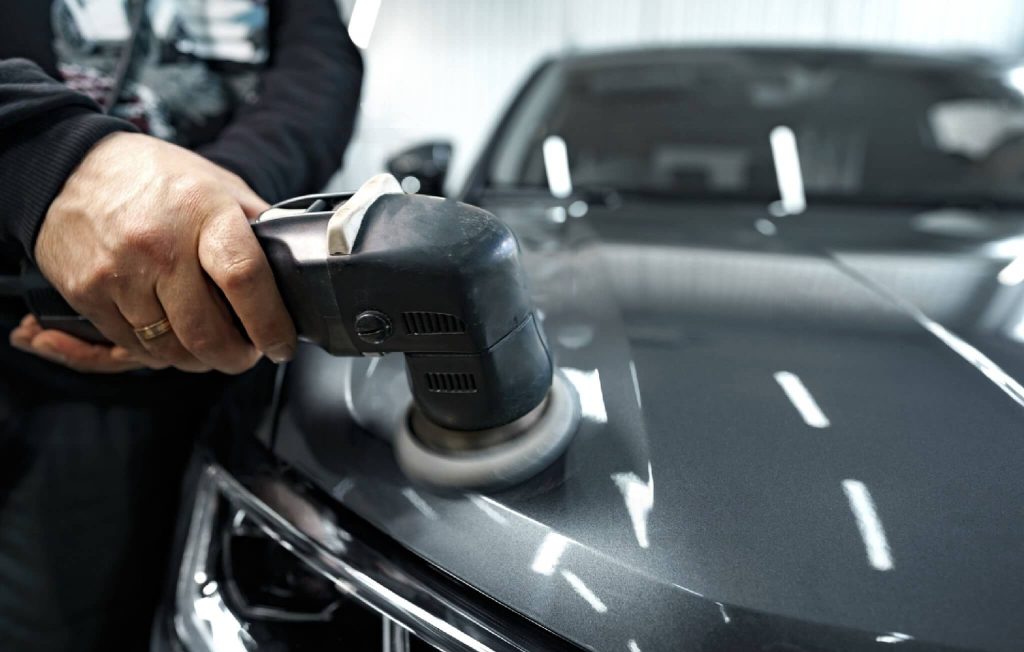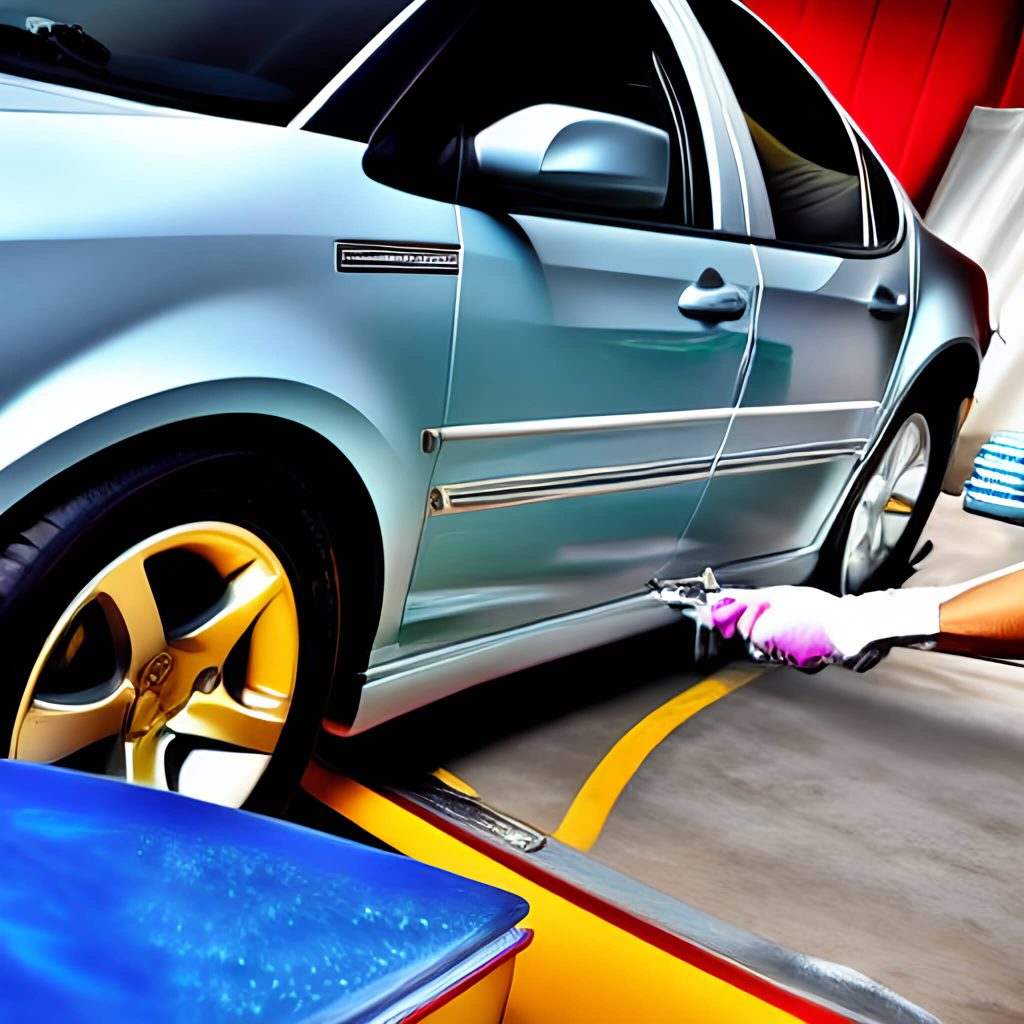This article was updated in May 15, 2023 with new products and information by Mark S. Taylor
Has your beloved car acquired unsightly paint scuffs that are ruining its appearance? Don’t worry; we’ve got you covered! In this article, we will guide you through the process of removing paint scuffs from your car, restoring its beauty to its former glory. No need to spend a fortune on professional services when you can tackle this task yourself. So let’s dive in and learn the secrets to make those paint scuffs vanish.

Introduction
Your car’s paintwork can easily fall victim to various types of damage, and one common annoyance is paint scuffs. These superficial scratches can occur from minor collisions, brushes against objects, or even clumsy door openings. However, fret not, as most paint scuffs can be repaired at home with the right techniques and materials. By following the steps outlined in this article, you can effectively remove paint scuffs and enhance the overall aesthetics of your car.
Contents
Understanding Paint Scuffs
Before jumping into the removal process, it’s crucial to understand what paint scuffs are. Paint scuffs are surface-level scratches that haven’t penetrated the clear coat, which is the protective layer on top of the paint. These scratches usually appear lighter than the car’s base color and can be visually unappealing. Fortunately, since they are typically shallow, they can often be treated without professional intervention.
Read More: What Does a Bad Starter Sound Like?
Preparing for the Paint Scuff Removal
To begin the paint scuff removal process, it’s essential to gather the necessary materials. You’ll need:
- Microfiber cloth
- Water
- Mild soap or car wash solution
- Toothpaste or baking soda
- Rubbing alcohol or nail polish remover
- Soft cloth or sponge
- Specialized scuff removal product (optional)
- Car polish
- Wax
Additionally, before proceeding, ensure that the affected area is clean. Wash the car using mild soap or a car wash solution, and gently rinse off any dirt or debris from the scuffed area. Pat it dry with a microfiber cloth, as any remaining dirt can worsen the scuffs during the removal process.
Removing Paint Scuffs
Now that you’re prepared let’s get down to the actual paint scuff removal. There are a few methods you can try, depending on the severity of the scuffs:
- Using toothpaste or baking soda:
- Apply a small amount of toothpaste or baking soda to a damp sponge or cloth.
- Gently rub the affected area in circular motions.
- Continue this process until the scuffs start to fade.
- Rinse the area with water and pat dry.
- Applying rubbing alcohol or nail polish remover:
- Dampen a soft cloth or sponge with rubbing alcohol or nail polish remover.
- Gently rub the scuffed area in circular motions.
- Increase the pressure gradually until the scuffs disappear.
- Rinse the area with water and pat dry.
- Utilizing a specialized scuff removal product:
- Follow the product’s instructions carefully.
- Apply a small amount of the product to a soft cloth.
- Gently rub the scuffed area using circular motions.
- Continue until the scuffs are no longer visible.
- Clean the area with water and pat dry.

Polishing and Waxing the Car
Once the paint scuffs have been successfully removed, it’s essential to restore the shine and protect the paintwork. Follow these steps to polish and wax your car:
- Apply a small amount of car polish to a clean, soft cloth.
- Gently rub the polish onto the affected area using circular motions.
- Continue polishing until the area is smooth and glossy.
- Allow the polish to dry according to the product instructions.
- Once dry, use a separate clean cloth to remove any residue and buff the area.
- After polishing, it’s recommended to apply a layer of wax to protect the paint.
- Follow the instructions on the wax product and evenly apply it to the entire car.
- Allow the wax to dry and then buff the surface to a brilliant shine.
Preventing Paint Scuffs
While accidents happen, there are measures you can take to minimize the risk of paint scuffs in the future. Consider the following tips:
- Parking strategically:
- Choose parking spots away from high-traffic areas and potential hazards.
- Use designated parking spaces whenever possible.
- Avoid parking too close to other cars or objects.
- Using protective coatings:
- Apply a clear protective film or vinyl wrap to vulnerable areas of your car, such as the door edges or bumper.
- Consider investing in a ceramic coating for your car, which provides an additional layer of protection against scratches and scuffs.
By following these preventive measures, you can reduce the chances of paint scuffs and maintain your car’s appearance.
Conclusion
Removing paint scuffs from your car is an achievable task that can save you time and money. With the right materials and techniques, you can restore your car’s paintwork and regain its pristine look. Remember to gather the necessary materials, clean the affected area, and choose an appropriate method for removing the scuffs. Polish and wax your car afterward for added protection, and take preventive measures to avoid future scuffs. By following these steps, you’ll keep your car looking its best.
FAQs
- Can I use any toothpaste for removing paint scuffs?
- It’s best to use non-gel toothpaste without any abrasive ingredients.
- Is it necessary to use a specialized scuff removal product?
- While not essential, a specialized product can often provide more effective results.
- Can I use a regular cloth for applying car polish?
- It’s recommended to use a soft, microfiber cloth to avoid scratching the paint.
- How often should I wax my car?
- Wax your car every three to six months, depending on the climate and driving conditions.
- Will applying a ceramic coating prevent all paint scuffs?
- While a ceramic coating provides an extra layer of protection, it may not prevent all types of scuffs. However, it can significantly reduce the risk.
Remember, with a little patience and effort, you can remove those pesky paint scuffs and keep your car looking brand new.
